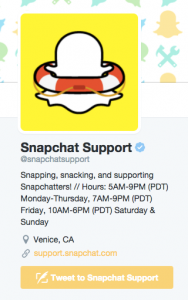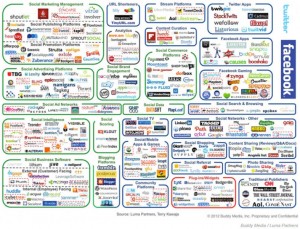
Are Millennials, GENX or Y’ers, Baby Boomers or Boomlets actually that different from one another?
Sure, they have different experiences, but doesn’t everyone want the same thing from their job? I propose that they do!
Some organizations, however, are so steeped in an outdated model of control and command, with lots of hierarchy, that they aren’t changing their companies to meet the needs of today’s workforce.
According to a study commissioned by Elance and oDesk1, 53% of hiring managers say it’s growing more difficult to find and retain millennials.
Regardless of whether you work in high tech, banking, retail, non-profit, or any other sector, it looks like it is time for organizations to adapt to their employees’ needs—not for just the Millennial generation, but for workers of all previous and future generations.
So, how do you do that?
Well, the steps are easy to understand but can be challenging to make a reality. Here are five key game changers in developing a culture for today’s workers.
Free Bonus: Download 27 shocking statistics about millennials that you need to know.
1. Make The Job Interesting
I am personally amazed at the creative energy of the Millennial generation.
As a Baby Boomer myself, I wonder if I had that same force of creativity 30 years ago when I began my career.
Actually, I think I did, but in many ways it was suppressed as I tried to bring new ideas and thoughts into the workplace.
The pressure to follow procedure, to not rock the boat, and to conform to “the way we do things around here” was so strong that it finally beat me down and impacted my ability to thrive creatively.
Today’s workforce not only wants, but also demands, to be allowed to do what needs to be done and to exercise creativity in accomplishing their work.
Give them broad direction, a goal, and purpose and then get out of their way. No one wants to be micro-managed. They want autonomy and flexibility.
There is no need to throw out job descriptions and goals. They provide parameters and guidelines.
But within those guidelines managers need to step out of the way. That will allow the employee to thrive.
You will be amazed by the resourcefulness of your employees when they are given the opportunity to accomplish the work in their own way.
2. Provide Meaningful Feedback
Millennials, in general, love feedback. They crave an honest and fair assessment of their work and expect it regularly.
Many employees dislike formal reviews and prefer casual one-on-ones and daily interactions that provide them with feedback on a real-time basis.
Effective one-on-ones are most effective when they are held regularly, when the manager is fully present during the interaction, when air time is shared between the employee and the manager, and when they end with good action items that are followed up on.
Team direction and feedback can be provided through daily stand-up meetings or scrums that are designed to keep everyone’s jobs aligned with daily goals and expectations.
Bottom line: make sure your managers treat employees with respect and they will readily accept their feedback and direction.
In fact, if employees know their managers care for them they will even accept constructive feedback without batting an eye.
3. Allow People To Work Collaboratively
As humans, we are inherently social creatures and yet many work environments are designed to make us machine-like and independent.
Get rid of offices and high-walled cubicles and replace them with collaborative spaces where people can go to brainstorm, to share ideas, and to solve critical business issues.
Most entrepreneurs today are finding that they need others around to meet their social needs.
That is why many communities are providing co-working spaces for entrepreneurs, so they can collaborate across corporate boundaries to support and help one another.
Why don’t we do the same thing in our corporate office spaces? Open environments allow normal work-friendly discussion and allow our social needs to be met as a natural part of our work.
4. Engage People In Decision Making
Every employee in your office has great ideas. If you don’t ask them, you will never discover how insightful their feedback can be.
Be a company that values your employees by continually asking them what they think, what they want, and how you can do better.
Engage your employees in “think tanks” to come up with new and better ways of doing things.
For example, we have engaged employees in hackathons to tear down broken processes or to re-engineer our thinking.
We create employee committees to address key business problems, and we empower these groups to make decisions that make a difference. Doesn’t everyone want to make a difference at work? I know that I do.
If you think that’s a radical idea and leaves your organization too vulnerable to ideas you may not be able to support, then throw a business leader into the committee so he or she can guide the process to a successful outcome.
After doing a thorough evaluation of our performance appraisal process by engaging our employees in a dialogue about reviews, we learned that the process wasn’t working.
Managers avoided conducting reviews because they had to rate employees on out-of-date goals and on competencies that didn’t matter.
Employees always felt let down after the review because they hoped for more honest, real-time feedback, but didn’t receive it.
So, what do you do if this happens during your evaluation? Revise the system and boil it down the basics.
Now, our current review is a quarterly 10–15 minute conversation between the employee and manager that is guided by four simple questions:
- What did you learn during the last 90 days?
- What are you working on currently?
- What support do you need to accomplish your current tasks?
- What skills are you developing to help you in your career over the next 90 days?
Make your organization a virtual think tank where new ideas are valued and implemented.
5. Incentivize What People Care About
Employees generally do what they are encouraged to do. If you incentivize what they already want to do, you will make it easy for them to excel.
After 32 years working in the banking, high tech, retail, and marketing industries with baby boomers, GENX’ers, and GENY’ers, I have found that no matter their age, employees always seek:
- Opportunities to learn
- The ability to grow and develop
These two obviously go hand-in-hand, but let’s first focus on learning.
What do employees want to learn? Ask them. Generally, employees want to know about your business.
What is your business model, how do you make money, how do departments work together, and what is the impact of their work on other teams, for starters.
This type of learning is easily conveyed through company and team meetings, open forums, lunch and learns, etc.
Everyone is concerned about his or her career, so focus your growth and development efforts on helping employees develop skills that will propel their careers forward.
Start by teaching transferable skills or core skills of your business. If you are a finance company, teach them financial literacy.
If you are a relationship business, teach them how to build and maintain effective relationships.
I recommend launching a career development program where individuals share their personal career paths in an open forum.
Teach employees involved in this program about themselves using inventories like Strengths Finder and the Myers-Briggs Type Indicator (MBTI) personality profile.
We have created job profiles of most corporate positions and have defined traditional and non-traditional career paths, so everyone can perceive their next career step.
Surprisingly, our newest employees seem to be those that most interested in career counseling, which we provide regularly for all employees.
Response to career development efforts are phenomenal because you’re addressing motivation that matters—helping employees see a long-term vision of their value to the company along with chances for personal and professional growth.
Once you have mastered transferable skills, then you can provide growth and development through job-specific skills.
These skills are best taught through coaching and mentoring, job shadowing, and work assignments. The possibilities are endless.
Strengthening your employees’ skill sets provides individual growth and builds organizational capacity.
If you focus on building a great organizational culture using these five guidelines you will harness the great work needs and characteristics of every generation.
According to Ron Zemke, Claire Raines and Bob Filipczak from “Generations at Work,”
They [Millennials] combine the teamwork ethic of the Boomers with the can-do attitude of the Veterans and the technological savvy of the Xers. At first glance, and even at second glance, Generation Next may be the ideal workforce—and ideal citizens.
How Do You Engage Millennials?
Any advice for us? Let us know your thoughts in the comments!
Business & Finance Articles on Business 2 Community(73)








